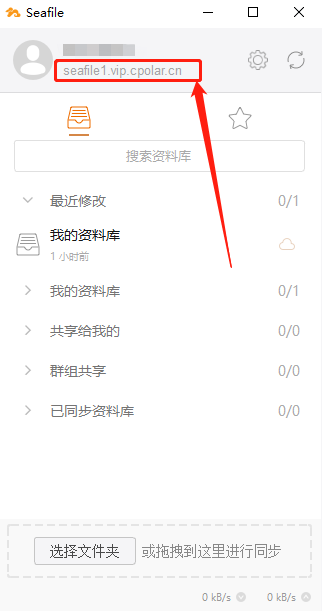将从零开始实现整个方法, 包括数据流水线、模型、损失函数和小批量随机梯度下降优化器,但现代的深度学习框架几乎可以自动化地进行所有这些工作,但从零开始实现可以确保我们真正知道自己在做什么。
下一章会使用框架简洁的实现线性回归
# 提前导入的库
import random
import torch
import matplotlib.pyplot as plt
1 生成数据集
我们将根据带有噪声的线性模型构造一个人造数据集。

def synthetic_data(w, b, num_examples): #@save
"""生成y=Xw+b+噪声"""
X = torch.normal(0, 1, (num_examples, len(w)))
y = torch.matmul(X, w) + b
y += torch.normal(0, 0.01, y.shape)
return X, y.reshape((-1, 1))
true_w = torch.tensor([2, -3.4])
true_b = 4.2
features, labels = synthetic_data(true_w, true_b, 1000)# 生成1000个点
# 绘制散点图,我们可以简单看下每个点趋近于哪条线
plt.scatter(features[:, 0].numpy(), labels.numpy(), 1.0)
plt.xlabel('Feature')
plt.ylabel('Label')
plt.title('Scatter Plot of Generated Data')
plt.show()

2 读取数据集
每次抽取一小批量样本,并使用它们来更新我们的模型。
def data_iter(batch_size, features, labels):
num_examples = len(features)
indices = list(range(num_examples)) # 创建一个包含所有样本索引的列表
random.shuffle(indices) # 随机打乱索引,以确保每次迭代时数据的顺序都是随机的
# 遍历索引列表,步长为batch_size
for i in range(0, num_examples, batch_size):
# 根据当前的索引i和batch_size,计算出当前小批量的索引范围
batch_indices = torch.tensor(
indices[i: min(i + batch_size, num_examples)])
# 使用当前小批量的索引从特征和标签中抽取对应的数据
yield features[batch_indices], labels[batch_indices]
# 设置小批量的大小
batch_size = 10
for X, y in data_iter(batch_size, features, labels):
# 打印第一个小批量的特征和标签
print(X, '\n', y)
break
第一个下批量的特征和标签

PS:在深度学习框架中实现的内置迭代器效率要高得多
3 定义模型
.matmul 函数是 PyTorch 中的一个方法,用于执行矩阵乘法。
定义一个简单的线性模型,即一个特征矩阵X和向量w进行矩阵-向量相乘后,再加上一个偏置参数b
def linreg(X, w, b): #@save
"""线性回归模型"""
return torch.matmul(X, w) + b
4 定义损失函数
因为需要计算损失函数的梯度,所以我们应该先定义损失函数。这里使用均方误差(MSE)
def squared_loss(y_hat, y): #@save
"""均方损失"""
return (y_hat - y.reshape(y_hat.shape)) ** 2 / 2
5 定义优化算法
线性模型有解析解,但是为了模拟其他没有解析解的模型,这里使用梯度下降,即在每一步中,使用从数据集中随机抽取的一个小批量,然后根据参数计算损失的梯度,接下来,朝着减少损失的方向更新我们的参数。每一步更新的大小由学习速率lr决定。
def sgd(params, lr, batch_size): #@save
"""小批量随机梯度下降"""
with torch.no_grad():
for param in params:
param -= lr * param.grad / batch_size
param.grad.zero_()
6 初始化模型参数
初始化参数
import torch
# 初始化权重w,使用正态分布,均值为0,标准差为0.01,形状为(2, 1)
w = torch.normal(0, 0.01, size=(2, 1), requires_grad=True)
# 初始化偏置b,值为0,形状为(1,),这里使用reshape或者直接创建一个标量
b = torch.zeros(1, requires_grad=True)
7 训练
# 设置模型参数
lr = 0.03 # 学习率
num_epochs = 3 # 迭代周期(迭代几次)
net = linreg # 线性回归模型
loss = squared_loss # 平方损失函数
for epoch in range(num_epochs):
for X, y in data_iter(batch_size, features, labels): # 计算当前小批量的损失
l = loss(net(X, w, b), y) # 使用net函数计算预测值,然后计算与真实值y的损失
l.sum().backward() # 将损失相加(因为损失是按小批量计算的),然后对所有参数求梯度
sgd([w, b], lr, batch_size) # 使用参数的梯度更新参数
with torch.no_grad():
train_l = loss(net(features, w, b), labels)
print(f'epoch {epoch + 1}, loss {float(train_l.mean()):f}') # 打印每个epoch的损失
运行结果

比较真实参数和通过训练学到的参数来评估训练的成功程度。
print(f'w的估计误差: {true_w - w.reshape(true_w.shape)}')
print(f'b的估计误差: {true_b - b}')




















